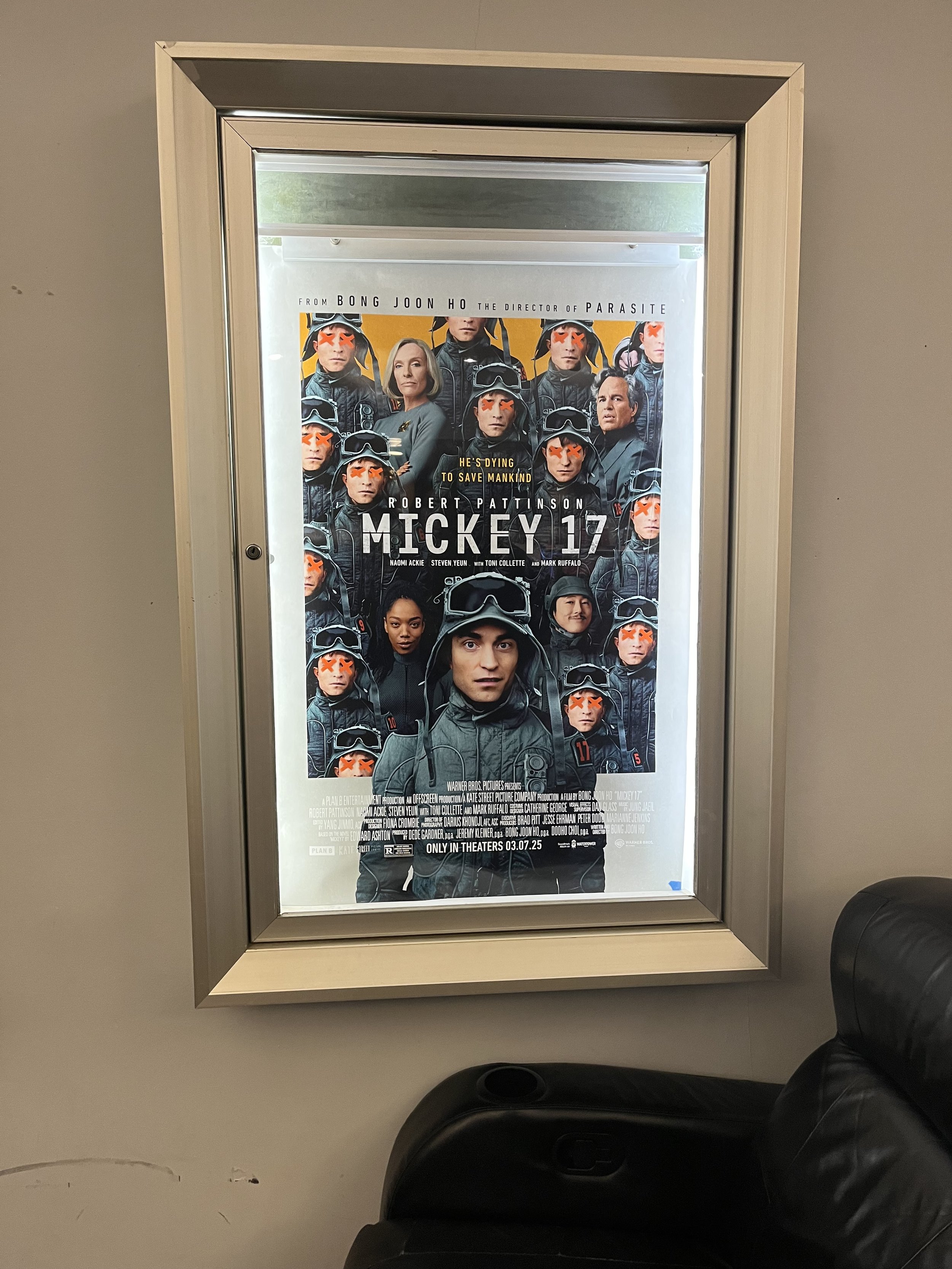Mickey 17: Blurring the Line Between Absurdism and the Near Future
Photo by Elizabeth Baumgardner '25
Bong Joon Ho, the South Korean director behind the Oscar-winning “Parasite,” often includes undertones of political commentary and societal issues in his films. His newest work, “Mickey 17,” is no different. Starring Robert Pattinson, Ho attacks the dangers of capitalism, lack of human empathy and the significance of death in a farcical and absurdist tone, all through the lens of a man who just can’t stop dying.
Pattinson plays Mickey, a man who signed up to be an “expendable” on a spaceship traveling to the far-off planet of Niflheim. The role of an expendable is gruesome. Doctors run all sorts of lethal clinical tests on Mickey to develop vaccines for the Niflheim environment. But why would anyone sign up for this? It just so happened that Mickey and his not-so-good friend Timo, played by Steven Yeun, got caught up in debt to Earth’s cruellest loan shark, causing Mickey to flee the planet altogether.
The voyage to Nilfheim is led by Kenneth Marshall, portrayed by Mark Ruffalo, as one of the most over-the-top and farcical villains to hit the big screen this decade. Marshall, in combination with his equally excessive wife, portrayed by Toni Collette, are gimmicky characters parodying a certain American political regime.
Struggling to find political success on Earth, Marshall takes his wife and his cult-like followers on a spaceship with intentions of colonizing Niflheim. His dumber-than-rocks personality and his wife’s control-freak narcissism can sometimes wear thin but become increasingly worrying to watch as you realize that they aren’t far removed from their imitations. Viewers may view Marshall's actions as too far-fetched and idiotic to ever represent a real person's way of thinking, but history will disagree.
Dying and being reprinted all the way to the seventeenth version of himself, Mickey is assigned a new role upon the ship touching down on the snow-covered surface of Niflheim. Populating the planet are “Creepers,” not-so affectionately named by Marshall.
Naturally, as fanatical colonizers would, Marshall becomes concerned with the extinction of these creatures without recognizing their true nature. Mickey is dispatched to capture a Creeper but clumsily falls into a fissure in which Timo leaves him to die.
Mickey survives, but the scientists reprinted Mickey anyway, leading to a new unfolding dynamic between Mickey 17 and 18. This juncture is where Ho can attack what it means to be an “expendable,” as 18 and 17 are complete opposites of one another. 17 views 18 as a completely different person, and suddenly begins to treat his death with more finality, believing that if he dies, any future clone will be a part of 18’s lineage and not his own, despite them both being clones of the same person. 17 and 18’s dynamic is stark and hilarious as the film develops, highlighted by Pattinson’s range, playing two different people in the same body.
With “Mickey 17,” Ho is asking us to evaluate our empathy. Are we kind to people or things we can’t understand? Do we treat people with the respect they deserve, or are they expendable? Within these questions and critiques, he also sends a warning. The film has already shown us the dangers of a Kenneth Marshall, yet the world keeps printing new ones.
